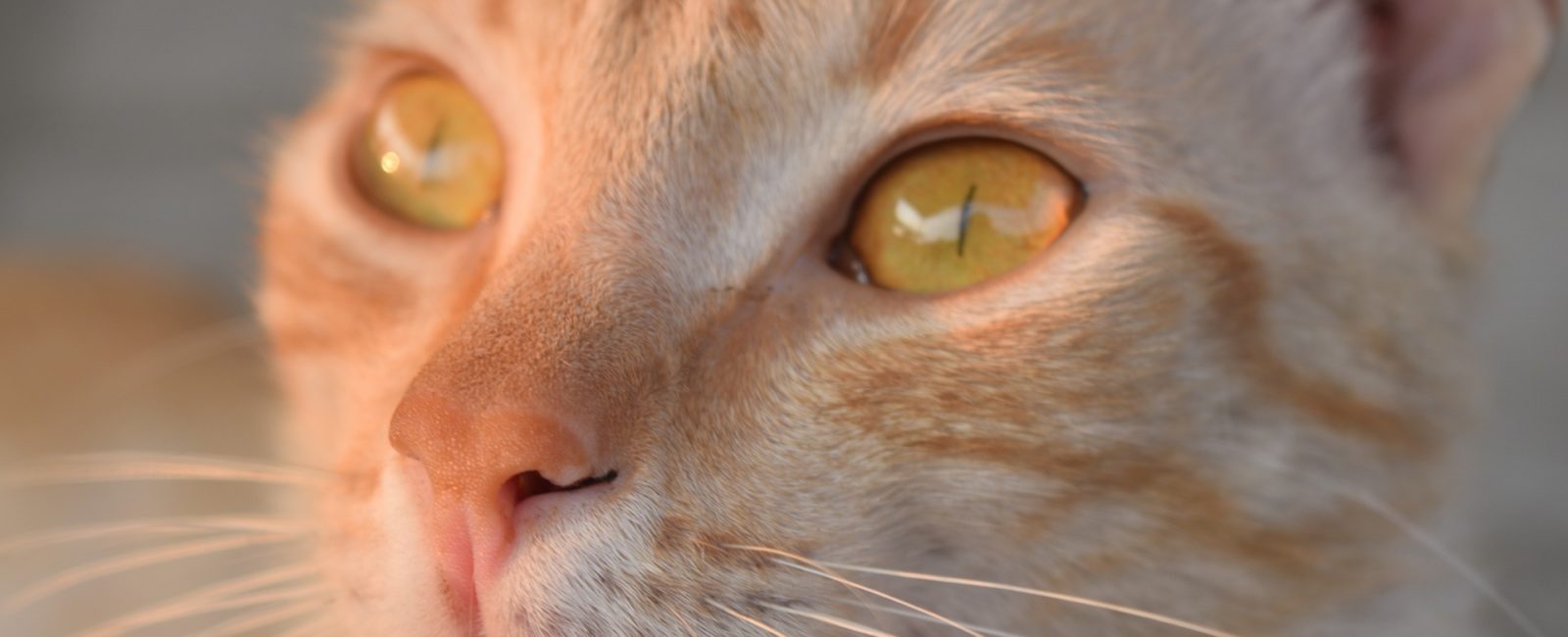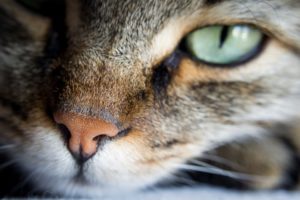Cat Noses: Wet vs Dry

Although many owners believe that an extremely dry or wet cat nose is indicative of illness, nothing could be further from the truth.
Not only are some cats’ noses naturally drier than others, but most cats’ nose temperatures and moisture levels vary throughout the day. The best way, then, to determine whether or not there’s reason for worry is to know what’s normal for your own cherished cat companion.
Curious as to why a cat’s nose is wet in the first place? The rhinarium (the skin around her nostril openings) and the sweat glands on it create moisture, while her lower tear ducts create drainage – both of which contribute to her having a wet nose. Just as we sweat in order to regulate our body temperature, cats use their noses’ moisture to both remain cool and to regulate their own body temperature. And since cats are famous for being fastidious self-groomers, their continous licking automatically adds a layer of moisture to their noses, keeping them wet.
Just as common as a wet nose is a dry one, and it’s seldom a cause for concern. If a cat spends a good deal of her time either sitting or lying in direct sunlight, her nose may be dry – similar to the drying effects that sunbathing has on our skin. The same holds true for a cat who spends too much of her time near a fireplace or a heating vent. The level of humidity in the air – particularly during the winter months – also plays a part in her nose’s level of moisture.
However, when a cat has an overly dry nose or one whose skin is cracked or flaking, the cause is dehydration, resulting from either decreased water intake or increased fluid loss. If you think your kitty is suffering from dehydration, bring her to the vet. Other signs of dehydration include: sunken eyes, dry mouth, elevated heart rate, skin elasticity, lethargy, depression, loss of appetite and panting.
Unlike a wet nose, a runny nose merits a visit to the vet in order to rule out – or rule in – such illnesses as upper respiratory infections (URIs). A number of viral and bacterial infections can cause URIs, including feline herpesvirus and feline chlamydia bacteria. Common symptoms of URIs are red, watery eyes, an excessively runny nose, a bubbly and colored nasal discharge, and sniffling and sneezing.
On the other hand, a runny nose could just as easily be due to an allergy. After a thorough examination of your cat, an in-depth discussion of her symptoms and living conditions, your vet may recommend changes in her food and/or litter as well as in her environment.
In short, a healthy cat’s nose tends to switch back and forth between moist and dry throughout the day. The more you familiarize yourself with your own feline’s daily pattern, the more easily you’ll recognize when something’s amiss, requiring a visit to the vet.



